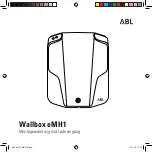
INFOTAINMENT
* Option/accessory, for more information, see Introduction.
405
The IBOC system is referred to as a "hybrid"
since it is both analogue and digital. During
hybrid operation, receivers still continue to
receive the analogue (non-digital) signal. HD
Radio receivers incorporate both modes of
reception, where the receiver will automatically
switch to the analogue signal if the digital signal
cannot be decoded or is lost by the receiver.
When you have tuned to an HD Radio station, the
symbol will appear in the infotainment sys-
tem display. The symbol will be displayed in dif-
ferent colors:
•
Grayed-out symbol
: NoHD Radio broadcast
reception
•
White symbol
: the radio is actively receiving
an HD broadcast
•
Orange symbol
: the radio is receiving an
HD broadcast with digital sound
More information about HD Radio and IBOC can
be found on Ibiquity's website, www.hdradio.com
and www.ibiquity.com.
Artist Experience
™
A radio station's logo and album art can be dis-
played. If a station opts to provide this informa-
tion, it is broadcast once every 12 minutes, which
means that there may be a delay before the
logo/album art appear on the screen. The radio
can store 100 station logos so the next time the
radio is tuned to the same station, the logo will
be displayed immediately. Album art is synched
with the artist that you are currently listening to.
iTunes tagging
This feature is common to both HD Radio and
SiriusXM
®
Satellite radio
*
. See the section
"iTunes tagging" in the article "SiriusXM satellite
radio settings" for more detailed information.
Ball game mode
This feature means that a main FM station (HD1)
will broadcast live events, where the content of
the programming is more important than sound
quality, in analog mode only to help prevent the
delay between analog and digital broadcasting.
The HD Radio symbol will be white during live
broadcasts and "Live" will be displayed next to
the symbol.
Benefits of digital broadcasting
•
Better sound (FM sounds near CD quality
and AM as analogue FM).
•
Some FM frequencies offer a greater num-
ber of listening choices through “multicast-
ing” (consisting of a frequency's main chan-
nel and any sub-channels that may also be
available on that particular frequency.)
•
When receiving a digital signal there is no
multipath disturbance or hisses/pops/crack-
ling due to outside influences.
How HD Radio
™
Technology
broadcasting works
HD Radio works similarly to conventional radio
and broadcasts of this type are available in many
areas of the United States. However, there are a
few key differences:
•
Instead of transmitting one analogue signal,
stations send out a bundled signal – both
analogue and digital.
•
An HD Radio receiver can receive both digi-
tal and analogue broadcasts. Depending on
the terrain and location of the vehicle (which
will influence the signal strength), the
receiver will determine which signal to
receive.
Related information
•
Switching HD Radio on and off (p. 406)
•
HD Radio sub-channels (p. 406)
•
•
•
Summary of Contents for S 90
Page 1: ...OWNER S MANUAL ...
Page 2: ......
Page 13: ...11 INDEX Index 535 ...
Page 14: ......
Page 15: ...INTRODUCTION ...
Page 57: ...SAFETY ...
Page 94: ......
Page 95: ...INSTRUMENTS AND CONTROLS ...
Page 177: ...CLIMATE ...
Page 201: ...LOADING AND STORAGE ...
Page 212: ......
Page 213: ...LOCKS AND ALARM ...
Page 242: ......
Page 243: ...DRIVER SUPPORT ...
Page 357: ...STARTING AND DRIVING ...
Page 401: ...INFOTAINMENT ...
Page 447: ...WHEELS AND TIRES ...
Page 468: ......
Page 469: ...MAINTENANCE AND SERVICING ...
Page 489: ...MAINTENANCE AND SERVICING 487 ...
Page 521: ...SPECIFICATIONS ...
Page 523: ...SPECIFICATIONS 521 Location of labels ...
Page 536: ......
Page 547: ......
















































